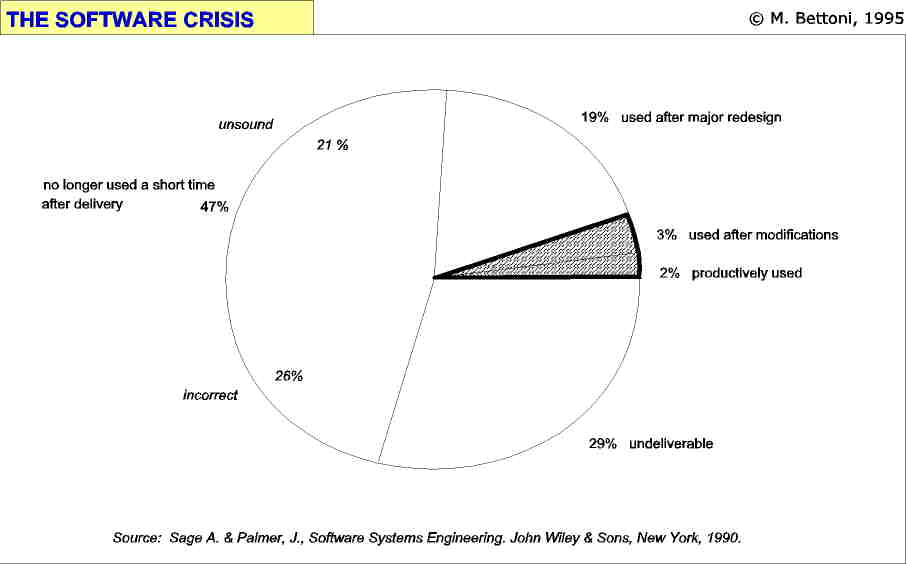 |
3 of 21
- The software crisis, that is the fact that the quality of current software is in general insufficient, has been recently reported by A. Sage and J. Palmer [Sage & Palmer, 1990, p.20]. According to these authors currently only 2% of the software produced can be used productively after delivery, 3% can be used only after modifications, 19% requires major redesings, 47% is no longer used a short time after delivery - 21% because it is unsound, 26% because it is incorrect - and 29% is so bad, that it is undeliverable.
- Many other studies on software productivity, which analyse this situation, mention the following central defects:
1) software is expensive, 2) it very often greatly exceeds planned costs, 3) its delivery is too late, 4) its documentation is poor, 5) it cannot be integrated, 6) it cannot be moved to a new environment or 7) be improved to evolve along with the user's needs, 8) its maintenance is difficult and error-prone, 9) the performances are unstable, 10) they do not correspond to specifications, 11) the software capacities fall short of what is expected and demanded, 12) software is difficult to use and 13) the system and software requirements used to develop the software system do not correspond to the needs of the users.
- The same studies connect those defects with steps taken in the software production, i.e.: A) with methods and tools of development, B) with methodology, C) with project management. The discipline which collects all these 3 domains and has the task of showing ways and means for the improvement of product quality, is called Software Engineering.
- But as the current software crisis shows, software engineering has not yet been successful at overcoming the problems noted above. In my opinion one major reason lies in an incomplete analysis of the situation, in which one explores only defects and the corresponding steps taken, whereas the approaches which lie behind these steps (foundations) are almost never considered: but it is precisely the analysis of these foundations which cannot be avoided, if one wants to improve the steps which depend on them.